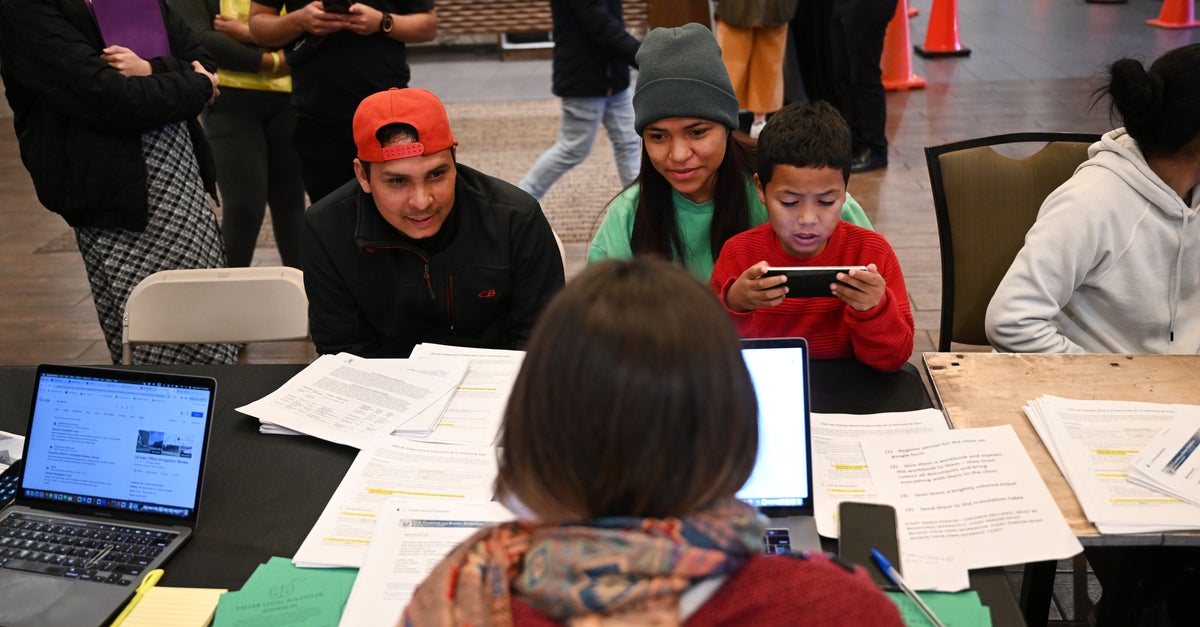While Senate Republicans killed a border security bill Wednesday because they said it wasn’t tough enough, Congress’ own economists said immigration is set to add trillions of dollars to the U.S. economy over the next decade.
The finding, by the nonpartisan Congressional Budget Office, echoes other economists who say the surge in immigration may have already provided another benefit to the economy by helping it avoid a recession, even as the Federal Reserve hiked interest rates sharply in 2023.
CBO Director Phillip Swagel told reporters that the economy through 2033 was projected to be bigger than previously thought because the number of workers in the labor force would be greater. According to economists, population growth and productivity growth determine the pace of economic growth over the long run.
“The labor force in 2033 is larger by 5.2 million people, mostly because of higher net immigration. More workers mean more output and that in turn leads to additional tax revenue,” Swagel said at a briefing unveiling the agency’s annual economic and budget forecast.
“As a result of those changes in the labor force, we estimate that from 2023 to 2034, GDP will be greater by about $7 trillion and revenues will be greater by about $1 trillion than they would have been otherwise,” he said.
Over that period, the U.S. economic output is expected to be about $352 trillion, according to the CBO.
Swagel’s comments came following a long-gestating measure to pair border security measures with aid for Ukraine and Israel that failed on the Senate floor.
Republicans had sought to tie the issues together after previously balking at approving aid for Ukraine, which is fighting off an invasion. But the final bill, negotiated by Sens. James Lankford (R-Okla.), Chris Murphy (D-Conn.) and Kyrsten Sinema (I-Ariz.), was rejected by Republicans as insufficient after former President Donald Trump pressed them to kill it.
Although the surge in migrants seeking asylum and undocumented immigration has put pressure on the government’s border control agencies and increased spending on social services by state and local governments, it may also have provided a needed pressure release for an economy at — or close to — full employment. The jobless rate has been below 4% for 24 straight months through January.
“One of the benefits of the strong immigration is it has helped to increase the supply of labor,” Mark Zandi, chief economist with Moody’s Analytics, told HuffPost.
He said Bureau of Labor Statistics data showed an upswing in the number of foreign-born workers since the onset of the COVID-19 pandemic, while at the same time, the number of native-born workers has been flat.
“Strong immigration has supported labor supply, which means, given the strong demand for labor, that the economy can grow more strongly without generating inflationary pressures,” Zandi said. “There’s a lot of costs but that’s a very significant benefit.”
In its analysis, the CBO said the influx of immigrants would also boost the size of the so-called prime-age labor force: workers aged 25 to 54. But it also said it would be expected to decrease wages in low-paid occupations and slow productivity growth as capital would be divided among more workers.
Zandi, a former adviser to 2008 GOP presidential candidate John McCain and now a favorite economist among Democrats, isn’t the only one who supports this theory about immigration as an inflation shock absorber.
Douglas Holtz-Eakin, a former CBO director and president of the conservative American Action Forum think tank, recently also proposed the idea in a post on the AAF website. He noted the similarity in immigration growth between undocumented migrants and those working on immigration parole (which allows them to work legally) and overall workforce growth.
“When combined with a surge in productivity growth, this supply-side expansion permitted inflation pressures to ease without a dramatic loss in output growth,” he wrote.
“So, there you have it. The way to solve an inflation crisis is to endure an immigration crisis.”
“Of course, one can run the experiment in reverse (as would presidential candidate Trump) and cut off immigration,” he added. “The result would be much, much slower labor force growth and a return to the sharp tradeoff between inflation pressures and the outlook for growth.”

